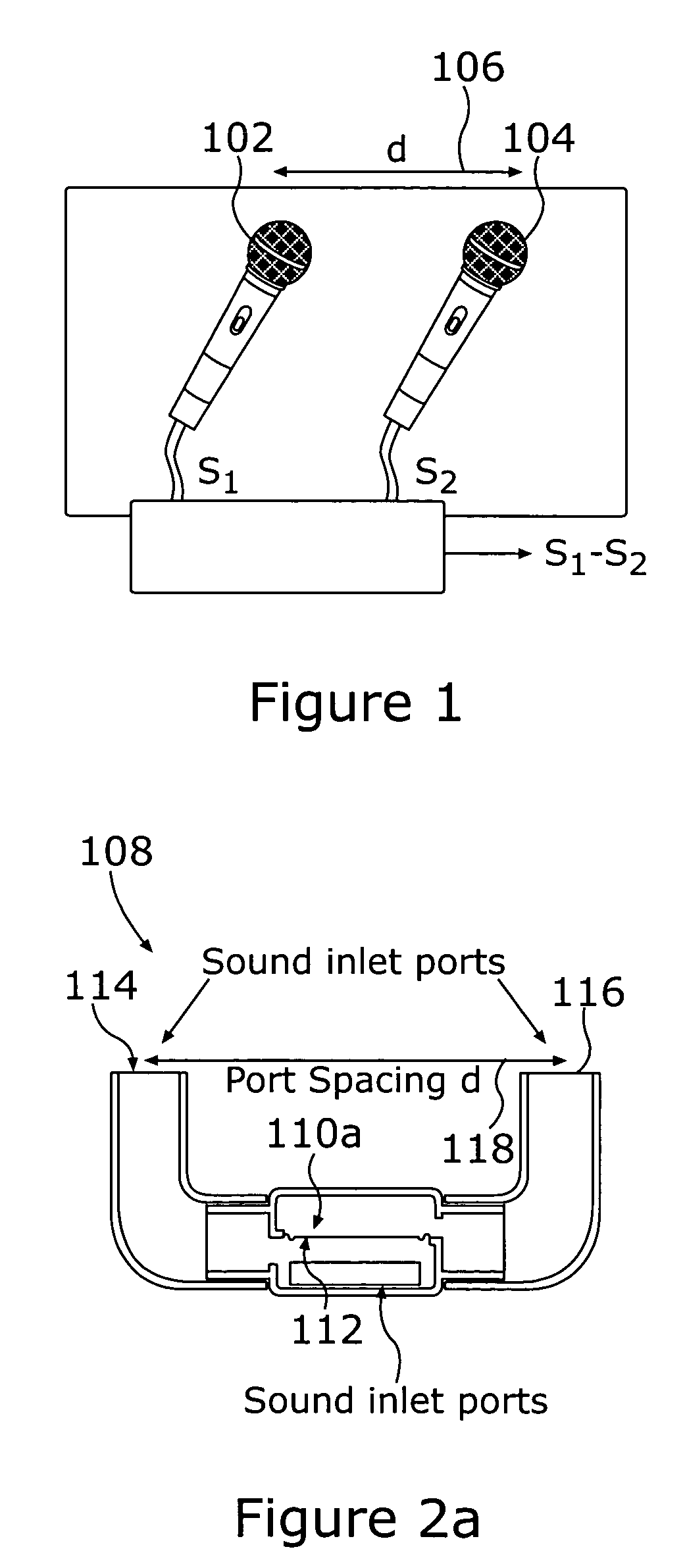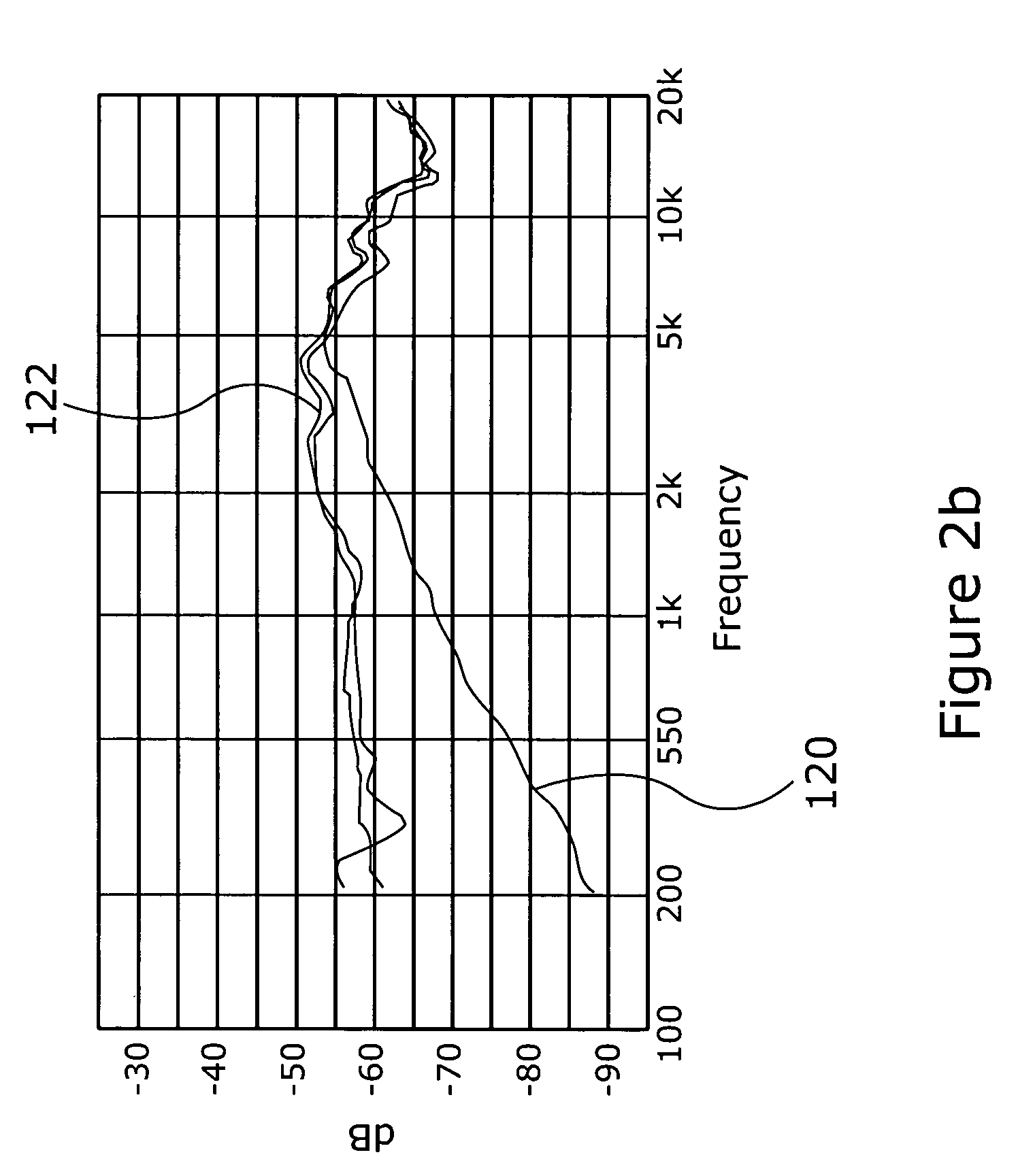High-order directional microphone diaphragm
a directional microphone and high-order technology, applied in the field of microphones, can solve the problems of limiting the applicability reducing the difference between the two sensed pressures, and reducing the sensitivity of miniature directional microphones, so as to improve the sensitivity, widen the frequency response, and improve the sensitivity
- Summary
- Abstract
- Description
- Claims
- Application Information
AI Technical Summary
Benefits of technology
Problems solved by technology
Method used
Image
Examples
Embodiment Construction
[0037]The present invention provides improved, miniature microphone diaphragms. A first-order directional microphone diaphragm is first described.
[0038]The present invention provides an extension of a new approach developed for the design of differential microphones inspired by the inventors' previous discovery of a novel mechanism for directional hearing in the parasitoid fly, Ormia ochracea, which is the subject of our co-pending '664 patent application.
[0039]In the conventional differential diaphragm (FIG. 6a), the two pressures act on the top and bottom surfaces of a simple membrane. In the approach of the present invention as well as that of the co-pending '664 application (FIG. 6b), the two pressures 142, 144 act on the top surface of either side of diaphragm 140 and produce a rocking motion. This novel approach offers both a host of design possibilities and the potential of radically improved microphone diaphragm performance. The primary object of the present invention is to ...
PUM
 Login to View More
Login to View More Abstract
Description
Claims
Application Information
 Login to View More
Login to View More - R&D
- Intellectual Property
- Life Sciences
- Materials
- Tech Scout
- Unparalleled Data Quality
- Higher Quality Content
- 60% Fewer Hallucinations
Browse by: Latest US Patents, China's latest patents, Technical Efficacy Thesaurus, Application Domain, Technology Topic, Popular Technical Reports.
© 2025 PatSnap. All rights reserved.Legal|Privacy policy|Modern Slavery Act Transparency Statement|Sitemap|About US| Contact US: help@patsnap.com



